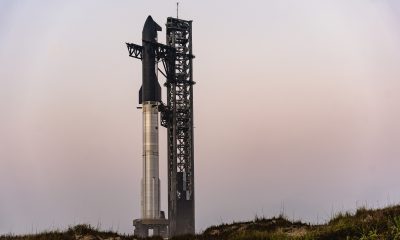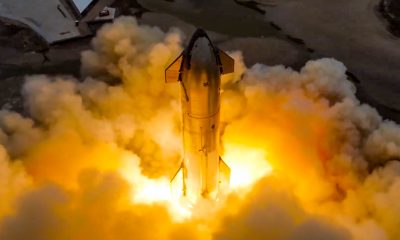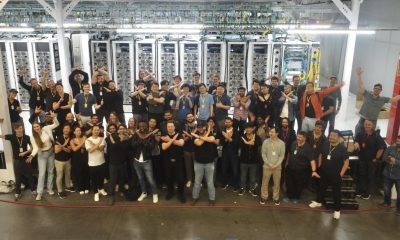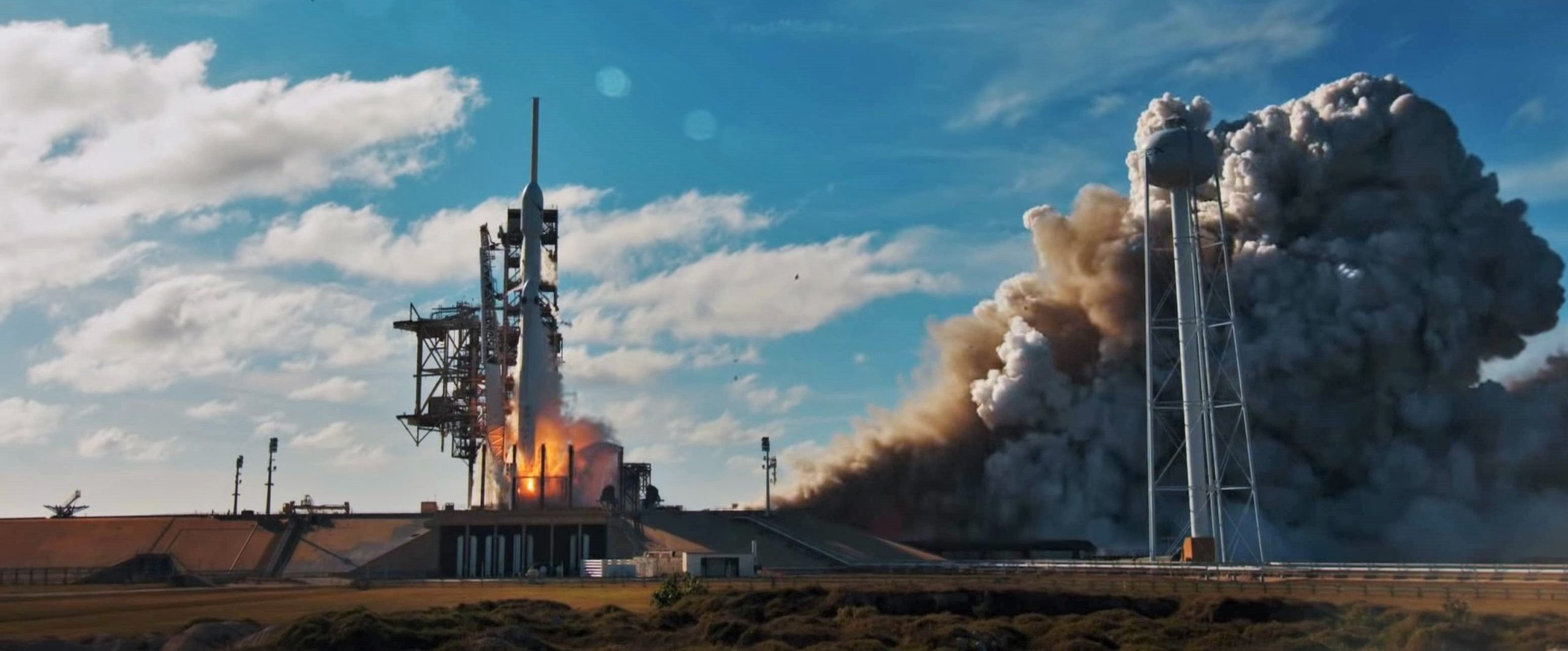
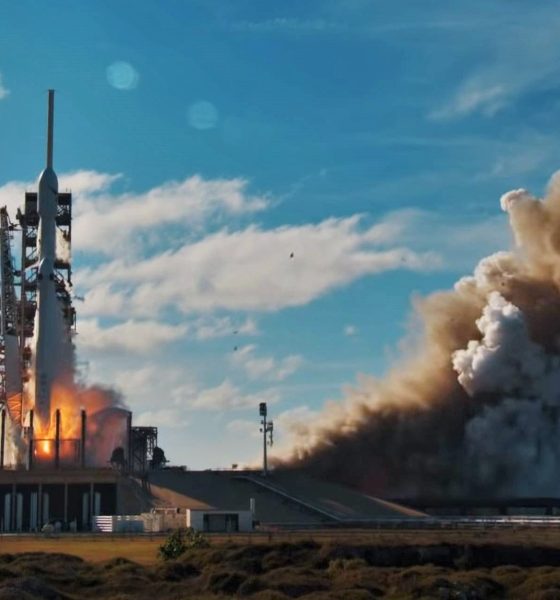
SpaceX
SpaceX fires up Falcon Heavy Block 5 for the first time, launch date announced
SpaceX has successfully ignited a Block 5 variant of its Falcon Heavy rocket for the first time ever, also marking the second-ever integrated static fire of the heavy-lift launch vehicle. According to SpaceX, the company will aim for an extraordinary four-day turnaround from static fire to launch, targeting liftoff as early as 6:36 pm EDT (22:36), April 9th.
Captured in a spectacular 4K video from a few miles away, it appears that the giant rocket managed to ignite all 27 Merlin 1D engines for no more than 3-4 seconds, an average length for Falcon 9 but quite a bit shorter than the 7-10 seconds Falcon Heavy fired for during its Flight 1 preparations.
During the Block 5 rocket’s first-ever integrated ignition test, all 27 Merlin 1D engines were (nominally) ignited in sequence, albeit just a handful of milliseconds apart from each other. During Falcon Heavy’s inaugural static fire and launch, CEO Elon Musk indicated that performance was capped at ~92% – 4.7 million pounds (~2115 metric tons) of thrust – for unspecified reasons. Assuming SpaceX has decided to uncap Falcon Heavy’s performance this time around, the rocket could have produced upwards of 5.6 million pounds (2550 metric tons) of thrust and will – again, according to Musk – have “way more performance than last year’s vehicle.” On top of the 8% increase from uncapping the rocket’s performance, Falcon 9 Block 5 introduced an additional 10% thrust increase for Merlin 1D engines, ultimately raising Falcon Heavy’s max thrust by a spectacular 20% in just one year.
With three times as many boosters as a single core Falcon 9 rocket, a Falcon Heavy static fire fundamentally produces as much as 100% more (2X as much) data as Falcon 9 during, requiring a fair bit more time to have engineers comb through it to verify vehicle health. The ultimate goal is for the vast majority of this work to be done by the rocket itself, which is actually what ends up shining through during what is known as the ‘quick-look review’ that shortly follows static fires, but Falcon Heavy is likely too new of a rocket for that just yet.
To temper expectations for this highly-anticipated launch, SpaceX took more than eight days to take Falcon Heavy Flight 1 from a planned static fire attempt to actual ignition, with an additional 13 days separating the successful static fire and the first official launch window. The consequences of sidestepping caution with Falcon Heavy could reach as high as the near-complete destruction of SpaceX’s Launch Complex 39A pad facilities, an absolutely mission-critical foundation for the first attempted crew launch of Crew Dragon and future astronaut launches to the International Space Station (ISS). As such, any unnecessary risk itself risks raising the ire of NASA and the US government in general, as it would also fundamentally be a conscious decision to risk the stability of US access to the Space Station for the sake of shaving a few days or weeks off of a commercial launch schedule.
SpaceX typically provides an update via Twitter 15-60 minutes after a Falcon preflight static fire test to announce whether the data generally looks good or if additional time is needed to analyze the rocket’s performance. According to a since-deleted USAF 45th Space Wing tweet, a healthy-looking static fire from Falcon Heavy Flight 2 would pave the way for a launch attempt no earlier than 6:36 pm EDT (22:36 UTC), April 9th.
This article will be updated with any additional information about Falcon Heavy’s health and launch date targets as soon as it becomes available.
Check out Teslarati’s Marketplace! We offer Tesla accessories, including for the Tesla Cybertruck and Tesla Model 3.
News
SpaceX starts offering Starship services for Mars, and it already has its first customer
SpaceX has started offering Starship services to Mars, and it has its first customer already.
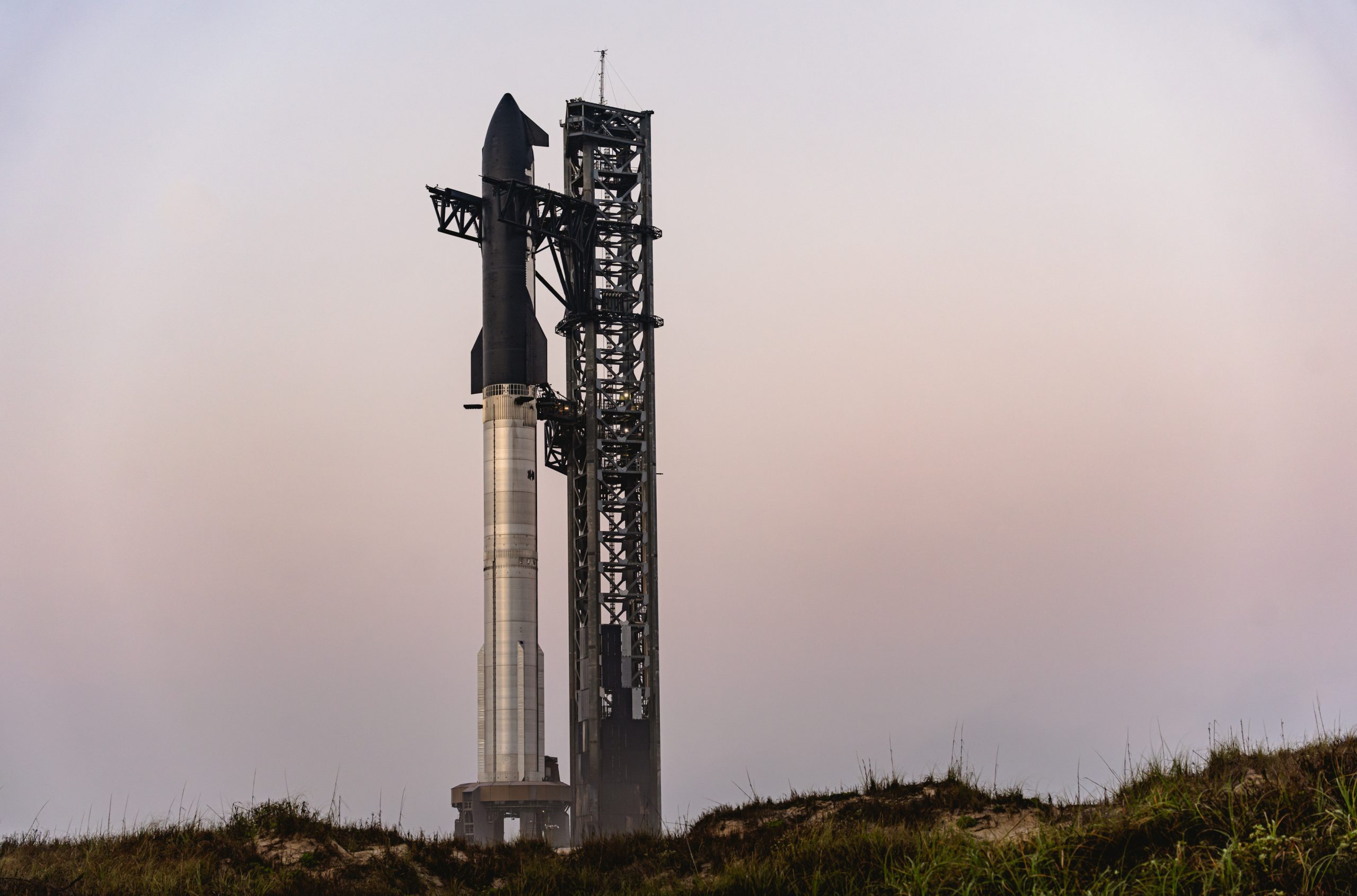
SpaceX is yet to master its Starship spacecraft, but the company is already planning several steps ahead. As per recent updates from company leadership, SpaceX has started offering Starship services to Mars, and it has its first customer already.
Starship Updates
SpaceX President and COO Gwynne Shotwell recently posted an update about SpaceX’s Starship program on social media platform X. As per the executive, the private space company is now “offering Startup services to the red planet.” Shotwell also noted that SpaceX is working with the Italian Space Agency on an agreement.
Italian Space Agency President Teodoro Valente shared his excitement for the project in a post on X. As per Valente, the payloads in the mission would be gathering scientific data from Mars.
“Italy is going to Mars! @ASI_Spazio and @SpaceX have signed a first-of-its-kind agreement to carry Italian experiments on the first Starship flights to Mars with customers. The payloads will gather scientific data during the missions. Italy continues to lead in space exploration!” Valente wrote in his post.
Next Starship Flight
SpaceX is currently making preparations for the launch of Starship Flight 10, which is expected to be held sometime this August, as per previous comments from CEO Elon Musk. At the end of July, SpaceX fired up its Starship Upper Stage on its South Texas launch site. This ship is the second that SpaceX has earmarked for Flight 10, as noted in a Space.com report, since the first exploded on a test stand on June 18 just before a planned static fire test.
A fully-stacked Starship first took to the skies in April 2023. Unfortunately, the last three missions this year, which were launched in January, March, and May, all ended with the upper stage experiencing a Rapid Unscheduled Disassembly (RUD) before its planned splashdown in the Indian Ocean.
Elon Musk
Elon Musk reveals SpaceX’s target for Starship’s 10th launch
Elon Musk has revealed SpaceX’s target timeline for the next Starship launch, which will be the tenth in program history.
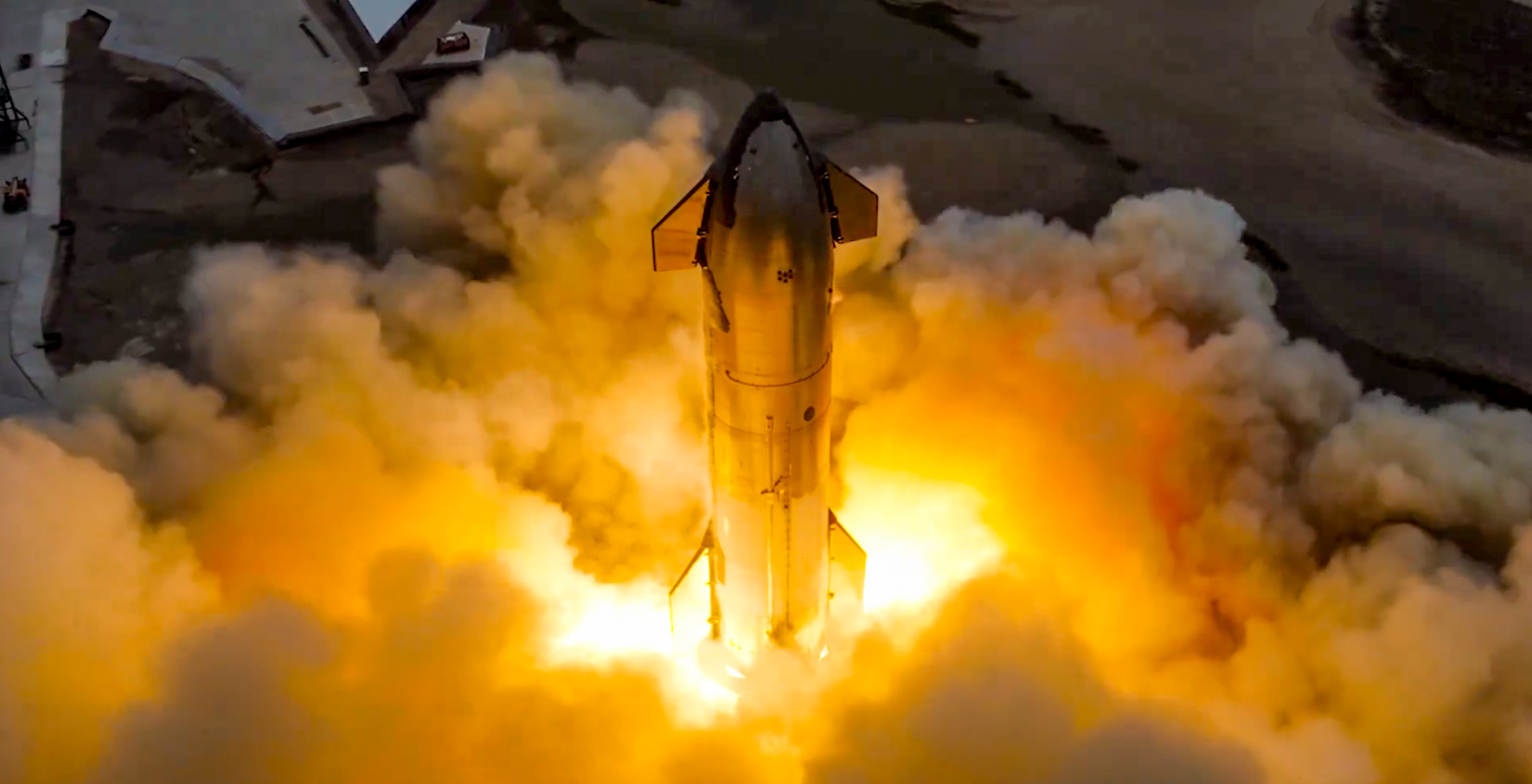
Elon Musk has revealed SpaceX’s target timeline for the next Starship launch, which will be the tenth in program history.
Musk says SpaceX is aiming for a timeline of roughly three weeks from now, which would come about ten weeks after the previous launch.
Coincidentally, it would bring the two launches 69 days apart, and if you know anything about Elon Musk, that would be an ideal timeline between two launches.
🚨 Just wanted you to know, Starship 10’s projected test flight date, according to Grok, is August 4.
Starship’s ninth test flight took place on May 27.
August 4 is 69 days after May 27.
Do with that what you will. 🚀 https://t.co/IISpT08rIy
— TESLARATI (@Teslarati) July 16, 2025
SpaceX is coming off a test flight in which it lost both the Super Heavy Booster and the Upper Stage in the previous launch. The Super Heavy Booster was lost six minutes and sixteen seconds into the flight, while SpaceX lost communication with the Ship at 46 minutes and 48 seconds.
Musk is aiming for the tenth test flight to take place in early August, he revealed on X:
Launching again in ~3 weeks
— Elon Musk (@elonmusk) July 14, 2025
This will be SpaceX’s fourth test flight of the Starship program in 2025, with each of the previous three flights bringing varying results.
IFT-7 in January brought SpaceX its second successful catch of the Super Heavy Booster in the chopstick arms of the launch tower. The ship was lost after exploding during its ascent over the Turks and Caicos Islands.
IFT-8 was on March 6, and SpaceX caught the booster once again, but the Upper Stage was once again lost.
The most recent flight, IFT-9, took place on May 27 and featured the first reused Super Heavy Booster. However, both the Booster and Upper Stage were lost.
The Federal Aviation Administration (FAA) hit SpaceX with a mishap investigation for Flight 9 on May 30.
News
SpaceX’s Crew-11 mission targets July 31 launch amid tight ISS schedule
The flight will lift off from Launch Complex 39A at Kennedy Space Center in Florida.
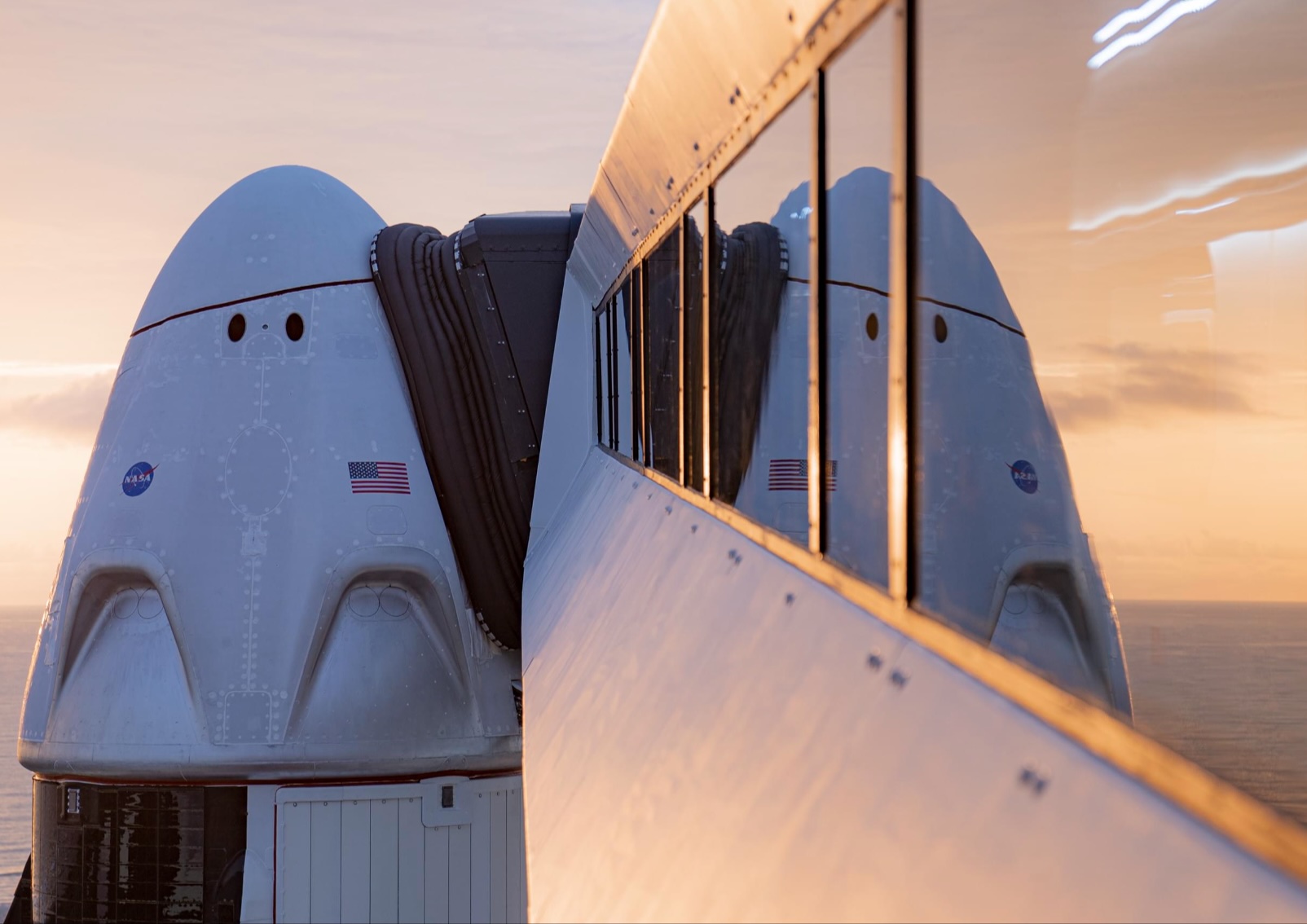
NASA and SpaceX are targeting July 31 for the launch of Crew-11, the next crewed mission to the International Space Station (ISS). The flight will lift off from Launch Complex 39A at Kennedy Space Center in Florida, using the Crew Dragon Endeavour and a Falcon 9 booster.
Crew Dragon Endeavour returns
Crew-11 will be the sixth flight for Endeavour, making it SpaceX’s most experienced crew vehicle to date. According to SpaceX’s director of Dragon mission management, Sarah Walker, Endeavour has already carried 18 astronauts representing eight countries since its first mission with NASA’s Bob Behnken and Doug Hurley in 2020, as noted in an MSN report.
“This Dragon spacecraft has successfully flown 18 crew members representing eight countries to space already, starting with (NASA astronauts) Bob (Behnken) and Doug (Hurley) in 2020, when it returned human spaceflight capabilities to the United States for the first time since the shuttle retired in July of 2011,” Walker said.
For this mission, Endeavour will debut SpaceX’s upgraded drogue 3.1 parachutes, designed to further enhance reentry safety. The parachutes are part of SpaceX’s ongoing improvements to its human-rated spacecraft, and Crew-11 will serve as their first operational test.
The Falcon 9 booster supporting this launch is core B1094, which has launched in two previous Starlink missions, as well as the private Ax-4 mission on June 25, as noted in a Space.com report.
The four-members of Crew-11 are NASA astronauts Zena Cardman and Mike Fincke, as well as Japan’s Kimiya Yui and Russia’s Oleg Platonov.
Tight launch timing
Crew-11 is slated to arrive at the ISS just as NASA coordinates a sequence of missions, including the departure of Crew-10 and the arrival of SpaceX’s CRS-33 mission. NASA’s Bill Spetch emphasized the need for careful planning amid limited launch resources, noting the importance of maintaining station altitude and resupply cadence.
“Providing multiple methods for us to maintain the station altitude is critically important as we continue to operate and get the most use out of our limited launch resources that we do have. We’re really looking forward to demonstrating that capability with (CRS-33) showing up after we get through the Crew-11 and Crew-10 handover,” Spetch stated.
-

 Elon Musk2 days ago
Elon Musk2 days agoElon Musk confirms Tesla AI6 chip is Project Dojo’s successor
-
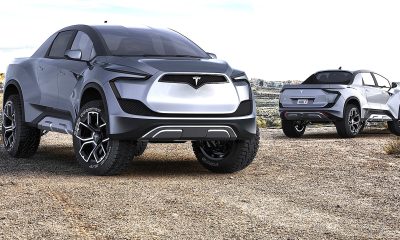
 News2 weeks ago
News2 weeks agoTesla hints a smaller pickup truck could be on the way
-
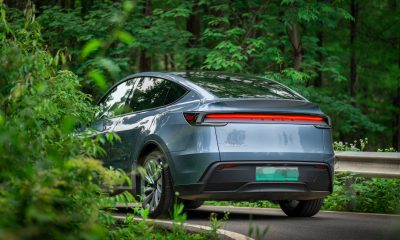
 News2 days ago
News2 days agoTesla Model Y L reportedly entered mass production in Giga Shanghai
-

 Elon Musk3 days ago
Elon Musk3 days agoTesla CEO Elon Musk details massive FSD update set for September release
-

 News2 weeks ago
News2 weeks agoElon Musk highlights Tesla Model Y’s most underrated feature
-
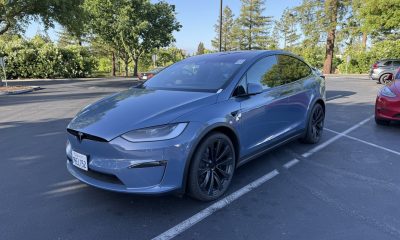
 News2 weeks ago
News2 weeks agoTesla takes first step in sunsetting Model S and X with drastic move
-

 Cybertruck2 days ago
Cybertruck2 days agoTesla’s new upgrade makes the Cybertruck extra-terrestrial
-
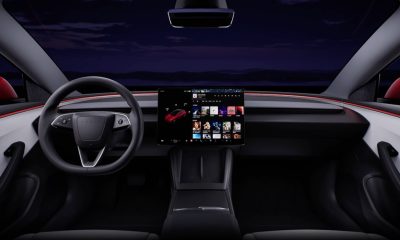
 Lifestyle2 weeks ago
Lifestyle2 weeks agoTesla brings perhaps the coolest interior feature to cars in latest update


